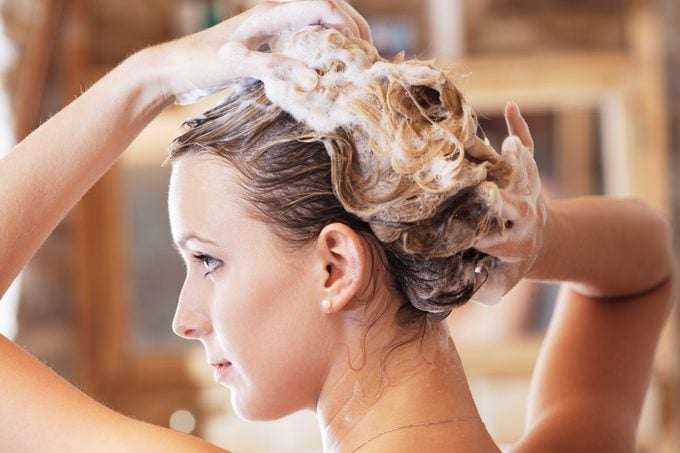What Is Hair Cycling, the Latest Viral Trend?
Updated: Mar. 16, 2023

Dermatologists weigh in on the efficacy of the popular beauty routine.
In the thick of winter, it’s normal for a new host of hair problems to crop up. From dryness to frizziness, a wide range of issues may plague your once-luscious locks. Some turn to moisturizers, such as argan or avocado oils, while others meticulously schedule their hair care.
Many have been combining both techniques through a beauty trend known as hair cycling. An extension of the popular skin cycling fad, hair cycling has gained major traction on TikTok with influencers and dermatologists alike. But to safely decide whether it’s right for your hair, it’s important to first understand how it works, including what it is, its potential benefits, and its optimal schedule.
What is skin cycling?
Before we get to hair cycling, it’s critical to understand its predecessor: skin cycling. At its core, skin cycling is the process of planning out your skin-care routine over the course of several days (typically, four) to focus on different needs at different times. According to dermatologist Nkem Ugonabo, MD, MPH, the term describes “the process of rotating active ingredients in your skin care.”
The idea behind skin cycling is that your skin, much like your muscles, needs both active work time and recovery time for optimal health. Therefore, on some days, you can apply active ingredients such as retinol or chemical exfoliant, while on others, you let your skin breathe.
What is hair cycling?
Hair cycling is very similar to skin cycling. According to dermatologist Stefani Kappel, MD, hair cycling “usually incorporates rest days into an alternating product routine to allow your hair and scalp to get the most benefit from a variety of products.” The best products to use will include a hydrating shampoo, conditioner and clarifying hair mask.
And if you’re reading this and thinking, “Wait, I’ve been doing this forever!” you’re correct. This isn’t explicitly a new concept, as much as it is a trendy term for intentionally listening to your hair’s needs and responding in kind. Communities of African American women, for example, have long instituted scheduled “wash days” to best care for their hair.
What are the benefits of hair cycling?

There are numerous purported benefits to hair cycling, with many claiming it has helped them grow longer, healthier, shinier hair. This improved hair health can be attributed specifically to the reduction of scalp irritation. According to Keppel, “[m]any of the hair products we use have the potential risk of inflammation from various active ingredients. Additionally, many products contain sulfates, which can be drying to the hair and scalp, or silicones, which can build up on the scalp and hair.” Because hair cycling can help prevent the overuse of these products, it can also prevent the irritation they cause.
Additionally, hair cycling can be great for those with specific scalp conditions. Dermatologist Nazanin Saedi, MD says she “always recommend[s]” hair cycling for patients with eczema or dandruff. This is because patients can alternate medicated and hydrating shampoos.
Is hair cycling safe?
Generally speaking, yes. However, because everyone’s hair is different, everyone’s hair will react differently to hair cycling. Before you start hair cycling, take stock of your hair problems. Is it too oily? Too dry or frizzy? Be sure to select hair cycling products that contain active ingredients designed to alleviate these specific problems. Then, as you start hair cycling, check in regularly to determine if your new routine is working well for you. Certain ingredients may contribute to any problems that do arise. For example, according to Kseniya Kobets, MD, “overusing hair products with keratin [can] make it harder and more brittle, causing breakage.”
How can I start hair cycling?
To start hair cycling, first, evaluate your current hair-washing routine. How many times per week do you wash your hair? Experts say to aim for two, allowing your hair and scalp to fully rest in between. To start hair cycling on a twice-weekly wash schedule, follow the wash instructions below:
Wash One
- Start by washing your hair with a calming shampoo, free from parabens, sulfates and fragrances.
- Rinse your hair, then apply a hydrating conditioner.
- Rinse and apply a moisturizing oil, such as jojoba oil. Leave in to lock in moisture.
Wash Two
- Wash your hair with a clarifying shampoo, such as one designed to treat dandruff or buildup.
- Rinse, then apply a hydrating hair mask. If you have particularly fine hair, apply the mask only to the ends, then rinse.
Get The Healthy @Reader’s Digest newsletter and follow The Healthy on Facebook, Instagram, and Twitter. Keep reading:












